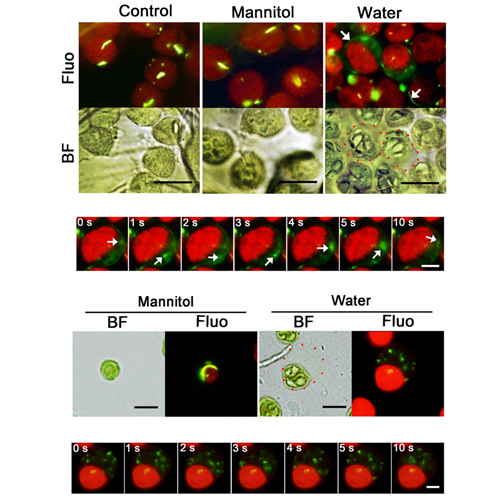Essential Role of VIPP1 in Chloroplast Envelope Maintenance in Arabidopsis
03-Sep-2012
The Plant Cell, 2012, doi/10.1105/tpc.112.103606, published on 03.09.2012
The Plant Cell, online article
The Plant Cell, online article
VESICLE-INDUCING PROTEIN IN PLASTIDS1 (VIPP1), proposed to play a role in thylakoid biogenesis, is conserved in photosynthetic organisms and is closely related to Phage Shock Protein A (PspA), which is involved in plasma membrane integrity in Escherichia coli. This study showed that chloroplasts/plastids in Arabidopsis thaliana vipp1 knockdown and knockout mutants exhibit a unique morphology, forming balloon-like structures. This altered morphology, as well as lethality of vipp1, was complemented by expression of VIPP1 fused to green fluorescent protein (VIPP1-GFP). Several lines of evidence show that the balloon chloroplasts result from chloroplast swelling related to osmotic stress, implicating VIPP1 in the maintenance of plastid envelopes. In support of this, Arabidopsis VIPP1 rescued defective proton leakage in an E. coli pspA mutant. Microscopy observation of VIPP1-GFP in transgenic Arabidopsis revealed that VIPP1 forms large macrostructures that are integrated into various morphologies along the envelopes. Furthermore, live imaging revealed that VIPP1-GFP is highly mobile when chloroplasts are subjected to osmotic stress. VIPP1-GFP showed dynamic movement in the transparent area of spherical chloroplasts, as the fluorescent molecules formed filament-like structures likely derived from disassembly of the large VIPP1 complex. Collectively, our data demonstrate that VIPP1 is a multifunctional protein in chloroplasts that is critically important for envelope maintenance.











